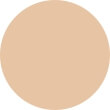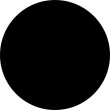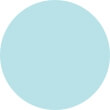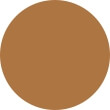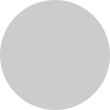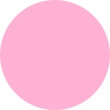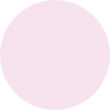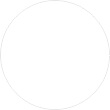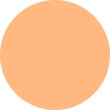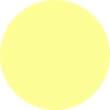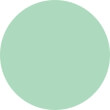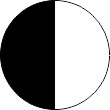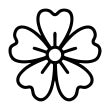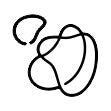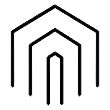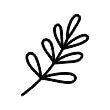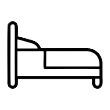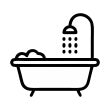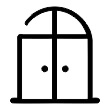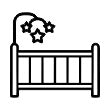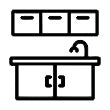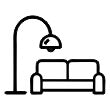Cleaning Walls: Before Wallpaper Installation
Everyone knows how important it is to clean kitchens, bathrooms, and dirty floors, but did you know that you should also clean walls? Over time, dust, smudges, grime, and those pesky preschool marks, jelly/clay-covered fingerprints accumulate on our walls. Cleaning walls before installing wallpaper gives you a great experience in this project.
Cleaning walls may appear to be difficult, but it is well worth the effort, especially before the wallpaper installation. For the best results, clean the entire wall surface, not just the areas where smudges are most visible. Remove any artwork from the walls (nails and hooks can remain in place, but they should not become saturated with moisture while cleaning). Also, dust the entire wall surface. Line the bottom of the wall with towels to catch any drips.
Solutions For Cleaning Walls
For Medium Stains
The best water-based solution for cleaning walls with satin and semi-gloss paint finishes is a mixture of:
- 1 Gallon Of Warm Water
- 1 Tablespoon Liquid Dishwashing Detergent
- Fill A Second Bucket Halfway With Plain, Warm Water For Rinsing The Sponge Between Uses.
For Tough Stains
Use a more robust cleaning solution to remove dirtier walls or tougher stains, such as:
- 1 Gallon Of Warm Water
- 1 Cup Non-Sudsing Clear Ammonia
- 1 Cup Of White Vinegar
- 1 Cup Borax Or Baking Soda
Step By Step Guidelines For Cleaning Walls
Follow these guidelines when cleaning your walls before wallpaper installation.
Gather Materials Before Cleaning Walls
The good news is that no special cleaner is required to clean walls. You probably already have everything you need. What you should have on hand is as follows:
- Soft clothes or rags
- Natural sponge
- Rubber gloves
- Cleaning solutions
- Duster
- Water
- Two Buckets
- Vacuum (optional)
- Tack Cloth
Keep Drippings Off Your Floor
It is impossible to avoid water dripping down the walls while cleaning. Should these drips land on the dry, dusty parts of the walls, making cleanup a difficult task? Lay a towel along the base of the walls to protect the floors from collecting any dust or drips.
Dust Out Before Cleaning Walls
Dust the walls by vacuuming them with the dust brush attachment and wiping them down with a tack cloth. You can also use a foam craft brush to quickly remove dust from baseboards and mouldAlternatively, you can dust from top to bottom by wrapping a dry mop head in a clean rag.
Combine Water And Dish Soap For Cleaning Walls
Now that the dust has been removed, it is time to wash the walls. Fill one bucket with warm water and the other with liquid dishwashing detergent or dish soap and water. Soak a cloth in the solution and thoroughly wring it out.
Wash In Circular Motions
While cleaning walls, rub gently on the walls to prevent paint from being removed or fading. Starting from the top of the wall, work downward, and go over the surface in a circular motion. It is critical to remember to clean the entire wall in one session with the same solution. It will prevent roll marks from appearing on the wall.
Roll marks are wave effects caused by stop and go wall washing; they appear in different parts of the walls when they are not cleaned simultaneously. To avoid bubbling and watermarks, apply as little moisture as possible. Also, use only a little pressure as you make your circle.
Remove Any Stubborn Stains
If you have stubborn stains on your painted walls, use borax or baking soda with water to remove them. Combine any of them with water to make a paste. Rub the paste gently into the stained area of the wall to lift the stain. You can also use this technique to remove stains caused by your children with a pen or crayon.
Another stain removal method? Hydrogen Peroxide. It is incredibly effective on red wine stains. Dab a little hydrogen peroxide onto your cleaning rag (with the dish soap solution). To lift the red wine stain, gently press it into it for five minutes.
There's also a strange method for removing grease stains from kitchen walls that involves using your iron. Place a paper towel on the grease stain and press your iron (on low heat) for one minute. The hot paper towels will absorb the grease, revealing a clean wall beneath.
Dry The Walls After Cleaning
After you've finished cleaning, gently wipe the surface with a clean, dry cloth. You can also leave your windows open to allow the walls to dry as you go. Ensure your wall has dried for at least 48 hours before installing wallpaper.
ADVICE: ALWAYS TRY A SAMPLE FIRST
We provide inexpensive samples of almost all of our products so that you can test their suitability on your walls. We only offer such low-cost samples with free shipping to ensure you receive a reliable test.
If you are unsure whether your walls have previously been painted with low VOC paint, testing a sample is the only way to ensure a successful installation.
Test Samples After Cleaning Walls
How To Test A Sample On The Wall Stick your half sample to the wall and leave it there for a few days before removing it to see if it offers any resistance; it should remove without leaving any residue, but it should offer some resistance.
For example, if the edges are lifted or removed, it is too simple, or if bubbles form after installation, washing the wall should be done. Likewise, after cleaning the wall, test the other half of your sample to see if there is a difference in adhesion between the two halves of the same sample!
Frequently Asked Questions
Q: How Long Should A Wall Be Allowed To Dry Before Wallpapering?
Ans: It is recommended to leave the walls to dry for at least 36 hours to 48 hours before the wallpaper installation.
Q: Is It Necessary To Have Smooth Walls For Wallpaper?
Ans: The best way to apply wallpaper is to have a smooth, flat, and clean surface. Moreover, if cleaning is done correctly, this will clear all the dust and satins, thereby preparing the wall.
Q: What Is The Best Cleaner For Cleaning Walls?
Ans: You can use dish soap or vinegar as your primary cleaning agent. Here's how to make both:
Vinegar: In 1 gallon of water, combine 4-5 tablespoons of white distilled vinegar.
Dish Soap: In half bucket of water, mix 4-5 drops of liquid dish soap.
